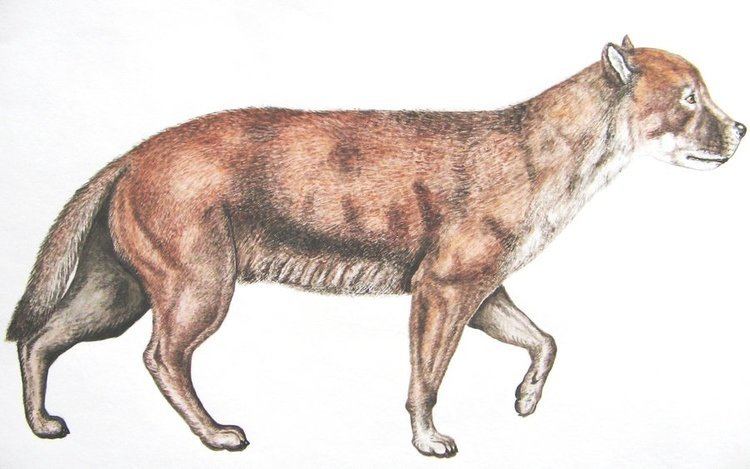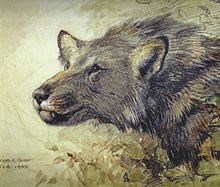Phylum Chordata Order Carnivores | Rank Genus | |
 | ||
Similar Borophaginae, Aelurodon, Epicyon, Carnivores, Canis lepophagus | ||
Bone crushing dog borophagus hilli dentary hagerman fossil beds national monument idaho usa
Borophagus ("gluttonous eater") is an extinct genus of the subfamily Borophaginae, a group of canids endemic to North America from the Middle Miocene epoch through the Late Pliocene epoch 12—2 Mya.
Contents
- Bone crushing dog borophagus hilli dentary hagerman fossil beds national monument idaho usa
- Evolution
- Taxonomy
- Species
- References

Evolution

Borophagus, like other borophagines, are loosely known as "bone-crushing" or "hyena-like" dogs. Though not the most massive borophagine by size or weight, it had a more highly evolved capacity to crunch bone than earlier, larger genera such as Epicyon, which seems to be an evolutionary trend of the group (Turner, 2004). During the Pliocene epoch, Borophagus began being displaced by Canis genera such as Canis edwardii and later by Canis dirus. Early species of Borophagus were placed in the genus Osteoborus until recently, but the genera are now considered synonyms.
Taxonomy

Typical features of this genus are a bulging forehead and powerful jaws; Borophagus has been considered to be probably a scavenger by paleontologists in the past. Its crushing premolar teeth and strong jaw muscles would have been used to crack open bone, much like the hyena of the Old World. However, Borophagus fossils are so abundant and geographically widespread that some paleontologists now argue that Borophagus must have been both the dominant carnivore of its time, and thus an active predator because carrion feeding alone could not have sustained such a large population. They note that not all carnivores with bone-cracking ability are scavengers, such as the modern spotted hyena; instead, they interpret the bone-cracking ability as an adaptation to social hunting where complete utilization of a carcass was favored.

The adult animal is estimated to have been about 80 cm in length, similar to a coyote, although it was much more powerfully built.
Species

Existence based on Figure 141 of Wang et al. (1999).

